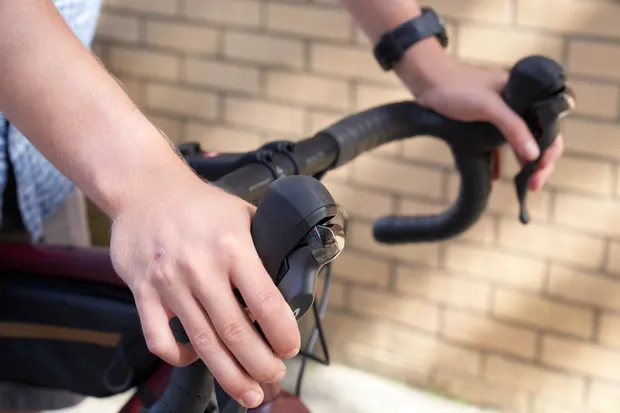When properly adjusted, disc brakes offer strong, consistent stopping power and operate quietly in most conditions.
Whenever you replace the disc brake pads or rotors, it’s crucial to eliminate any surface glaze and contamination for optimal performance. Bedding in your disc brakes involves transferring some pad material onto the rotor, allowing them to work together more effectively.
It’s best to bed in your disc brakes methodically rather than just heading out for a ride, as this prevents excess material from clogging the rotor’s pores.
In this guide, we’ll walk you through simple steps to bed in your disc brakes. While we illustrate the process on a gravel bike, these instructions also apply to road, hybrid, and mountain bikes.
Table of Contents
1. Make sure both pads and rotors are clean
A common error riders make is installing new pads without first cleaning rotors that may be contaminated with oils or other substances.
Whenever you replace your pads, be sure to thoroughly clean the disc brake rotor using isopropyl alcohol or a dedicated disc brake cleaner. Use a lint-free cloth to wipe away any leftover residue.
2. Find a safe place
It’s ideal to bed in new disc brakes in a safe, car-free area where you can safely accelerate and decelerate repeatedly. A long, gentle slope is perfect for this, but it’s not a requirement.
3. Keep it simple
While remaining seated on your bike, accelerate to a moderate speed and gently apply the brakes. The aim is to drag the pads against the rotor to evenly distribute the material between them.
Don’t come to a full stop; when you slow to a walking pace, release the brakes and pick up speed again.
As you slow down, try not to lock up the brakes, as this will result in an uneven transfer of material concentrated in one area.
4. Repeat 15-20 times
Repeat this process 15 to 20 times, and you should notice the brakes becoming increasingly powerful.
Some riders choose to wet the caliper and rotor with clean, cold water after each stopping cycle. The idea is that the water forms a slurry between the pad and rotor, similar to a wet stone. Opinions vary on this method, and it’s not commonly recommended by brake manufacturers in their guidelines.
After completing the cycle, SRAM suggests letting the bike rest for a while to allow the brakes to cool and the transferred material to set.
- Mastering the Art of Solo Cycling: 10 Essential Tips for Success - February 28, 2024
- Core Training for Cyclists : Transform Your Ride - February 27, 2024
- 10 Ways to Enhance Your Breathing for Better Cycling Performance - February 26, 2024

